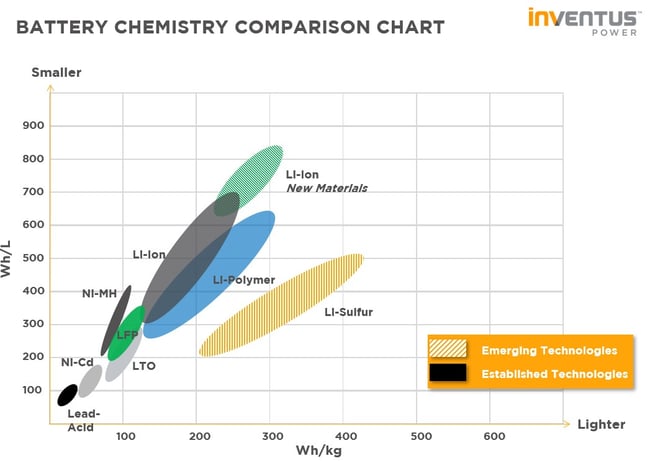Extreme Temperature Battery Chemistry Comparison
A comprehensive analysis of different battery chemistries and their performance characteristics in extreme temperature environments, from Arctic cold to desert heat.

Understanding Battery Chemistry Fundamentals
The choice of battery chemistry is crucial for extreme temperature applications. Different chemistries exhibit vastly different performance characteristics when subjected to temperature extremes, with some maintaining functionality while others fail catastrophically.
Our analysis examines four primary chemistry types: Lithium Iron Phosphate (LiFePO4), traditional Lithium-Ion (Li-ion), emerging Solid-State technologies, and legacy Lead-Acid systems, evaluating their performance across temperature ranges from -40°F (-40°C) to 140°F (60°C).
Lithium Iron Phosphate (LiFePO4) Performance
Temperature Range: -40°F to 140°F (-40°C to 60°C)
LiFePO4 chemistry demonstrates exceptional thermal stability and maintains over 80% capacity at temperature extremes.
Cold Weather Advantages:
- Maintains 85% capacity at -40°F (-40°C)
- Safe charging down to -20°F (-29°C)
- No lithium plating risk
High Temperature Benefits:
- Thermal runaway resistance up to 140°F (60°C)
- Stable discharge characteristics
- Extended cycle life at elevated temperatures
Traditional Lithium-Ion Comparison
Standard lithium-ion batteries, while offering high energy density, face significant challenges in extreme temperatures. At temperatures below 32°F (0°C), capacity drops dramatically, and charging becomes unsafe due to lithium plating.
Performance Limitations:
- • Capacity loss of 20-40% at 32°F (0°C)
- • Unsafe charging below 32°F (0°C) without heating
- • Thermal runaway risk above 122°F (50°C)
- • Reduced cycle life in temperature extremes
Solid-State Technology Analysis
Emerging solid-state battery technology shows promise for extreme temperature applications, though current implementations are limited by manufacturing costs and scalability challenges.
Advantages:
- • Superior thermal stability
- • Wide operating temperature range
- • Enhanced safety characteristics
- • Higher energy density potential
Current Limitations:
- • High manufacturing costs
- • Limited commercial availability
- • Power density constraints
- • Scaling challenges for large applications
Lead-Acid Legacy Systems
Traditional lead-acid batteries, while cost-effective, demonstrate poor performance in extreme temperatures and are being phased out of critical applications requiring reliable operation in harsh environments.
Capacity drops to less than 50% at temperatures below 20°F (-7°C), making them unsuitable for military, telecom, and critical infrastructure applications in cold climates.
Chemistry Selection Guidelines
Recommended Chemistry by Application:
Performance Data Summary
| Chemistry | Cold Weather (-40°F) | High Temp (140°F) | Safety | Cycle Life |
|---|---|---|---|---|
| LiFePO4 | 85% | 90% | Excellent | 5000+ |
| Li-ion | 60% | 75% | Moderate | 1000-2000 |
| Solid-State | 90% | 95% | Excellent | 10000+* |
| Lead-Acid | 45% | 80% | Moderate | 300-500 |
*Projected based on laboratory testing
Conclusion
For current extreme temperature applications, LiFePO4 chemistry provides the optimal balance of performance, safety, and reliability. Its proven track record across temperature ranges from -40°F to 140°F (-40°C to 60°C) makes it the preferred choice for mission-critical applications.
While solid-state technology shows promise for future applications, LiFePO4 remains the industry standard for extreme temperature battery systems where reliability cannot be compromised.
Need Expert Battery Chemistry Guidance?
Our battery engineers can help you select the optimal chemistry for your extreme temperature application.
Need Expert Battery Chemistry Guidance?
Our battery engineers can help you select the optimal chemistry for your extreme temperature application.